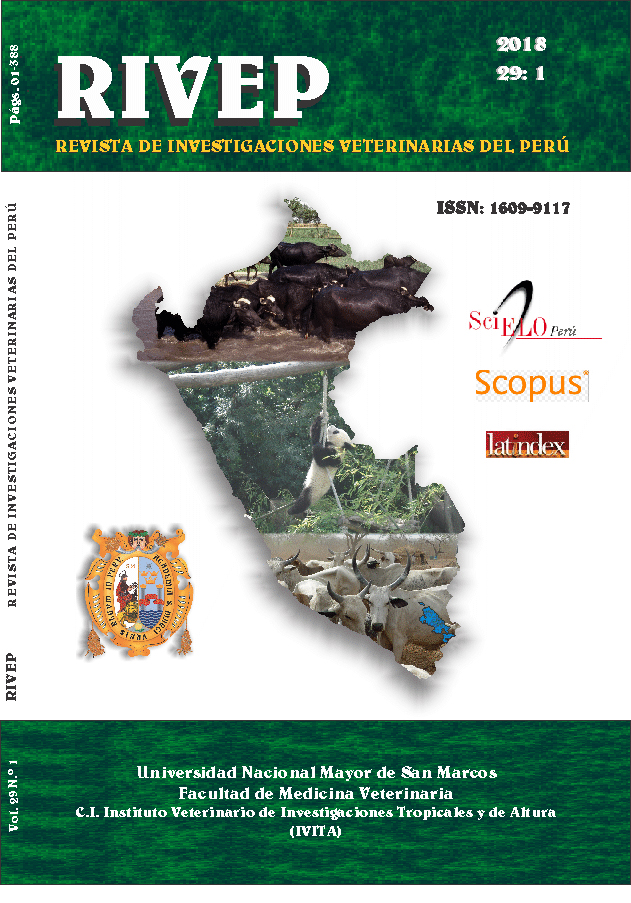Helminths in Pelecanus thagus and Spheniscus humboldti of the coast of Lima, Peru
DOI:
https://doi.org/10.15381/rivep.v29i1.14161Keywords:
helminths, Pelecanus thagus, Spheniscus humboldti, PeruAbstract
In June 2012, as a result of a marine phenomenon that resulted in the death of birds of several species of seabirds, endoparasites were studied in two pelicans (Pelecanus thagus) and two penguins (Spheniscus humboldti) found dead on the beach in the district of Chorrillos, Lima (Peru). The helminths were obtained from the digestive tract in both species using the Travassos protocols. The nematodes Contracaecum rudolphii and Syngamus trachea, the cestode Tetrabothrius sp, the trematode Galactosomum puffini and the acanthocephalan Corynosoma sp were identified in Pelecanus thagus. In Spheniscus humboldti, the trematode Cardiocephaloides physalis and the nematodes Contracaecum pelagicum and Cyathostoma phenisci were identified. Syngamus trachea, Galactosomum puffini, Corynosoma sp and Contracaecum pelagicum are considered new reports in Pelecanus thagus in Peru. In addition, Spheniscus humboldti can be considered new host of Cardiocephaloides physalis and Cyathostoma phenisci.Downloads
Downloads
Published
Issue
Section
License
Copyright (c) 2018 José Angulo Tisoc, Marco Quispe Huacho, Manuel Tantaleán Vidaurre, Jonatan Mikhail Del Solar Velarde

This work is licensed under a Creative Commons Attribution-NonCommercial-ShareAlike 4.0 International License.
AUTHORS RETAIN THEIR RIGHTS:
a. Authors retain their trade mark rights and patent, and also on any process or procedure described in the article.
b. Authors retain their right to share, copy, distribute, perform and publicly communicate their article (eg, to place their article in an institutional repository or publish it in a book), with an acknowledgment of its initial publication in the Revista de Investigaciones Veterinarias del Perú (RIVEP).
c. Authors retain theirs right to make a subsequent publication of their work, to use the article or any part thereof (eg a compilation of his papers, lecture notes, thesis, or a book), always indicating the source of publication (the originator of the work, journal, volume, number and date).










